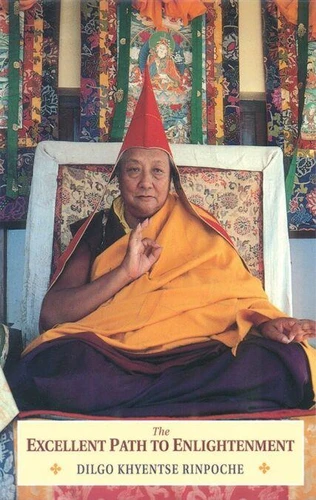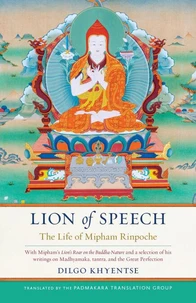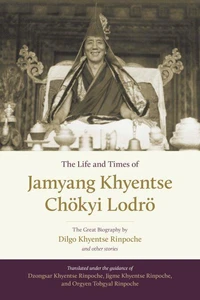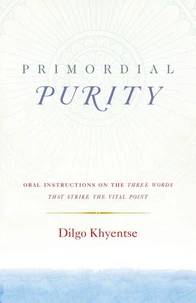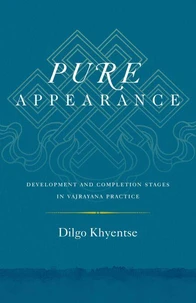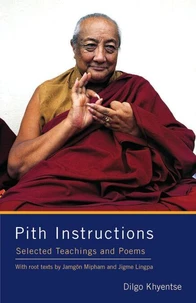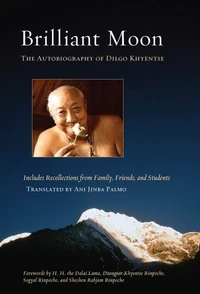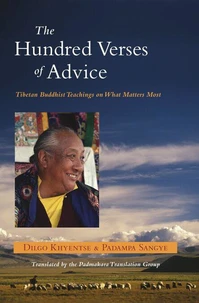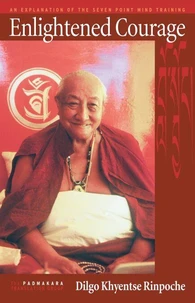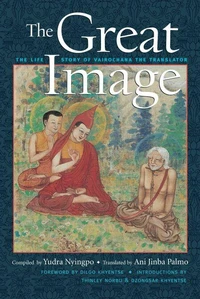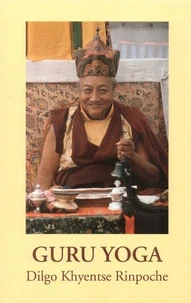The Excellent Path to Enlightenment
Par :Formats :
Disponible dans votre compte client Decitre ou Furet du Nord dès validation de votre commande. Le format ePub protégé est :
- Compatible avec une lecture sur My Vivlio (smartphone, tablette, ordinateur)
- Compatible avec une lecture sur liseuses Vivlio
- Pour les liseuses autres que Vivlio, vous devez utiliser le logiciel Adobe Digital Edition. Non compatible avec la lecture sur les liseuses Kindle, Remarkable et Sony
- Non compatible avec un achat hors France métropolitaine
 , qui est-ce ?
, qui est-ce ?Notre partenaire de plateforme de lecture numérique où vous retrouverez l'ensemble de vos ebooks gratuitement
Pour en savoir plus sur nos ebooks, consultez notre aide en ligne ici
- Nombre de pages128
- FormatePub
- ISBN1-55939-866-3
- EAN9781559398664
- Date de parution01/01/1996
- Protection num.Adobe DRM
- Taille25 Mo
- Infos supplémentairesepub
- ÉditeurSnow Lion
Résumé
The vow to perfect oneself in order to perfect others is called the thought of enlightenment or bodhichitta. This implies that every single action word or thought even the most trivial is dedicated to the good of all beings. To accomplish the good of others, we must first perfect ourselves by purifying and transforming our minds. This is the aim of what we call the preliminary practices, which establish the foundations of all spiritual progress.
In this book, Dilgo Khyentse Rinpoche explains a key practice text composed by Jamyang Khyentse Wangpo (1820-1892) on the Vajrayana preliminaries: taking refuge, generating the thought of achieving enlightenment for the sake of all beings, performing the meditation, and recitation of Vajrasattva to remove hindrances on the path to enlightenment, offering the mandala to accumulate merit and wisdom, and developing proper reliance on a spiritual teacher.
Clear, direct, and personal, these instructions illuminate the heart of Vajrayana practice. Included here are the Tibetan text as well as the mantras and prayers commonly recited in conjunction with this practice.
In this book, Dilgo Khyentse Rinpoche explains a key practice text composed by Jamyang Khyentse Wangpo (1820-1892) on the Vajrayana preliminaries: taking refuge, generating the thought of achieving enlightenment for the sake of all beings, performing the meditation, and recitation of Vajrasattva to remove hindrances on the path to enlightenment, offering the mandala to accumulate merit and wisdom, and developing proper reliance on a spiritual teacher.
Clear, direct, and personal, these instructions illuminate the heart of Vajrayana practice. Included here are the Tibetan text as well as the mantras and prayers commonly recited in conjunction with this practice.
The vow to perfect oneself in order to perfect others is called the thought of enlightenment or bodhichitta. This implies that every single action word or thought even the most trivial is dedicated to the good of all beings. To accomplish the good of others, we must first perfect ourselves by purifying and transforming our minds. This is the aim of what we call the preliminary practices, which establish the foundations of all spiritual progress.
In this book, Dilgo Khyentse Rinpoche explains a key practice text composed by Jamyang Khyentse Wangpo (1820-1892) on the Vajrayana preliminaries: taking refuge, generating the thought of achieving enlightenment for the sake of all beings, performing the meditation, and recitation of Vajrasattva to remove hindrances on the path to enlightenment, offering the mandala to accumulate merit and wisdom, and developing proper reliance on a spiritual teacher.
Clear, direct, and personal, these instructions illuminate the heart of Vajrayana practice. Included here are the Tibetan text as well as the mantras and prayers commonly recited in conjunction with this practice.
In this book, Dilgo Khyentse Rinpoche explains a key practice text composed by Jamyang Khyentse Wangpo (1820-1892) on the Vajrayana preliminaries: taking refuge, generating the thought of achieving enlightenment for the sake of all beings, performing the meditation, and recitation of Vajrasattva to remove hindrances on the path to enlightenment, offering the mandala to accumulate merit and wisdom, and developing proper reliance on a spiritual teacher.
Clear, direct, and personal, these instructions illuminate the heart of Vajrayana practice. Included here are the Tibetan text as well as the mantras and prayers commonly recited in conjunction with this practice.

